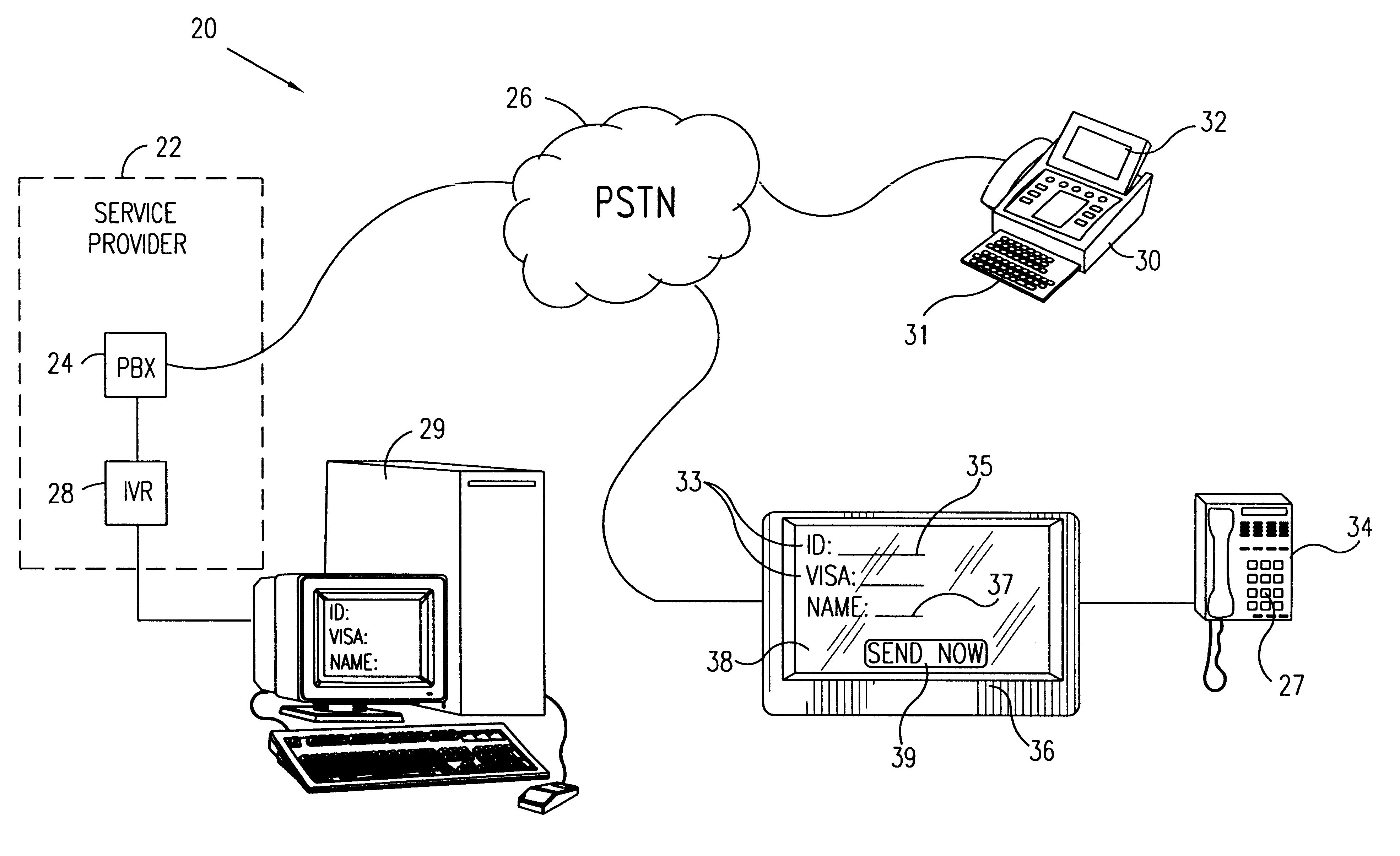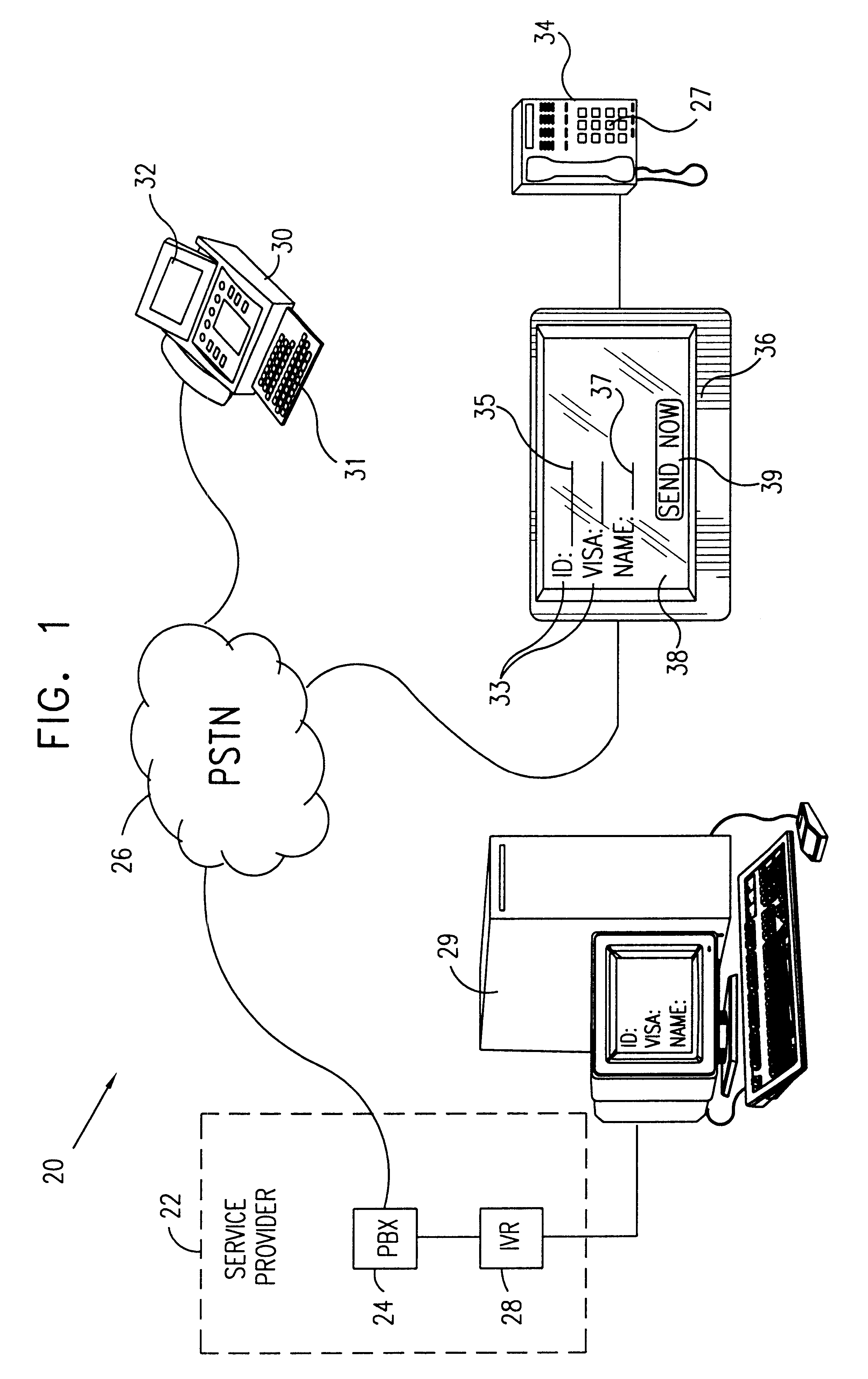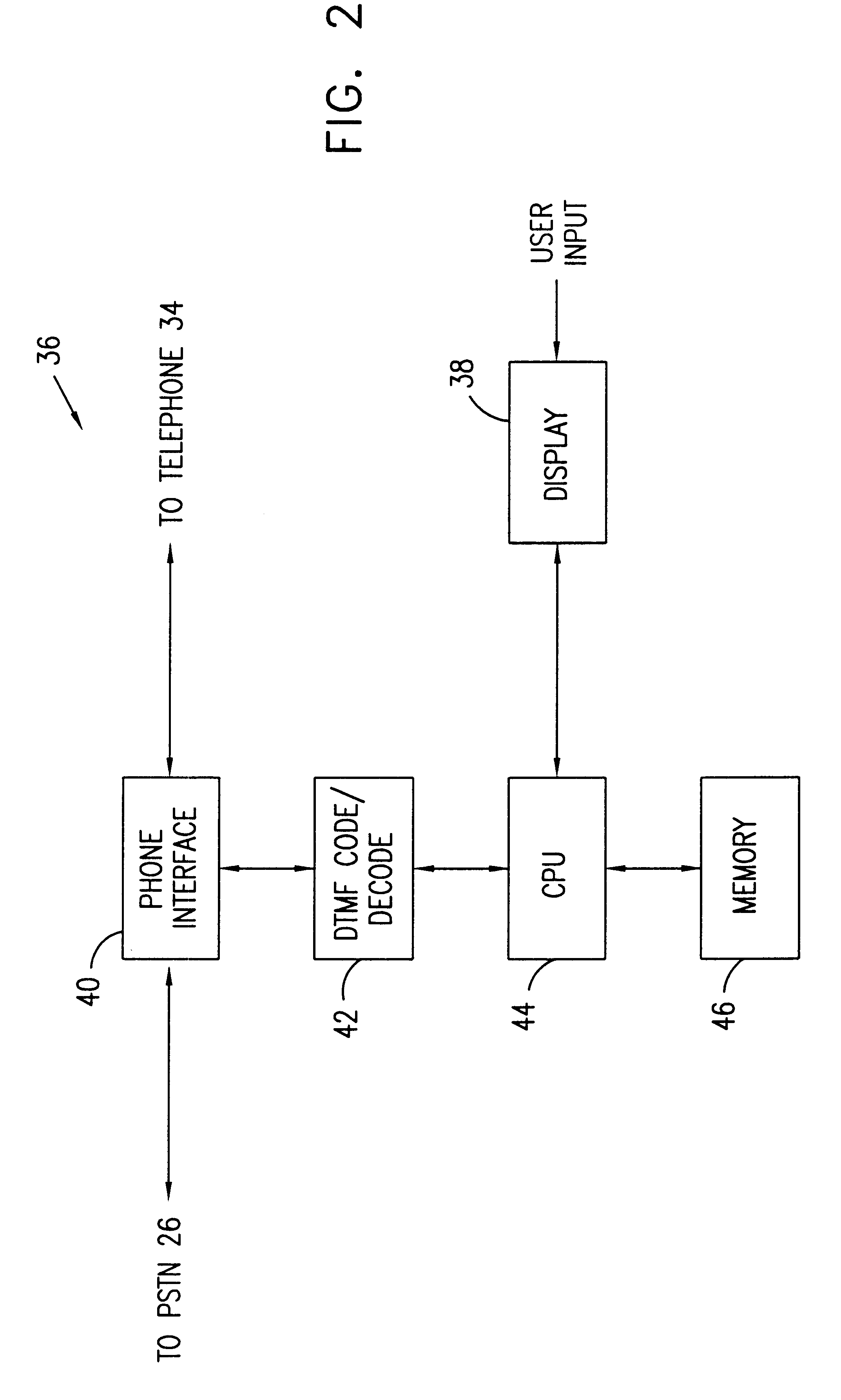Adaptable subscriber unit for interactive telephone applications
a subscriber unit and telephone technology, applied in the field of telephone communications, can solve the problems of time-consuming process, and achieve the effect of greatly enhancing functionality and fast and more efficien
- Summary
- Abstract
- Description
- Claims
- Application Information
AI Technical Summary
Benefits of technology
Problems solved by technology
Method used
Image
Examples
Embodiment Construction
FIG. 1 is a schematic illustration of a system 20 for interactive telephone applications, in accordance with a preferred embodiment of the present invention. A telephone service provider facility 22 comprises an IVR 28, which is typically coupled by a switchboard, such as a PBX 24, to a telephone network, generally a public switched telephone network (PSTN) 26. For example, a suitable IVR for this purpose is the IBM Corepoint Voice Response system, which is described at http: / / www.corepoint.com. When a user dials in to the service provider through the telephone network, the call is connected by the PBX to the IVR for response. In response to the call, the IVR is programmed to generate sequences of DTMF signals in accordance with a standard IVR protocol. A suitable protocol of this type is described in detail hereinbelow. These DTMF signals are received by the user's subscriber unit, such as a telephone, and cause the unit to generate interactive, graphic user interface screens, as d...
PUM
 Login to View More
Login to View More Abstract
Description
Claims
Application Information
 Login to View More
Login to View More - R&D
- Intellectual Property
- Life Sciences
- Materials
- Tech Scout
- Unparalleled Data Quality
- Higher Quality Content
- 60% Fewer Hallucinations
Browse by: Latest US Patents, China's latest patents, Technical Efficacy Thesaurus, Application Domain, Technology Topic, Popular Technical Reports.
© 2025 PatSnap. All rights reserved.Legal|Privacy policy|Modern Slavery Act Transparency Statement|Sitemap|About US| Contact US: help@patsnap.com



